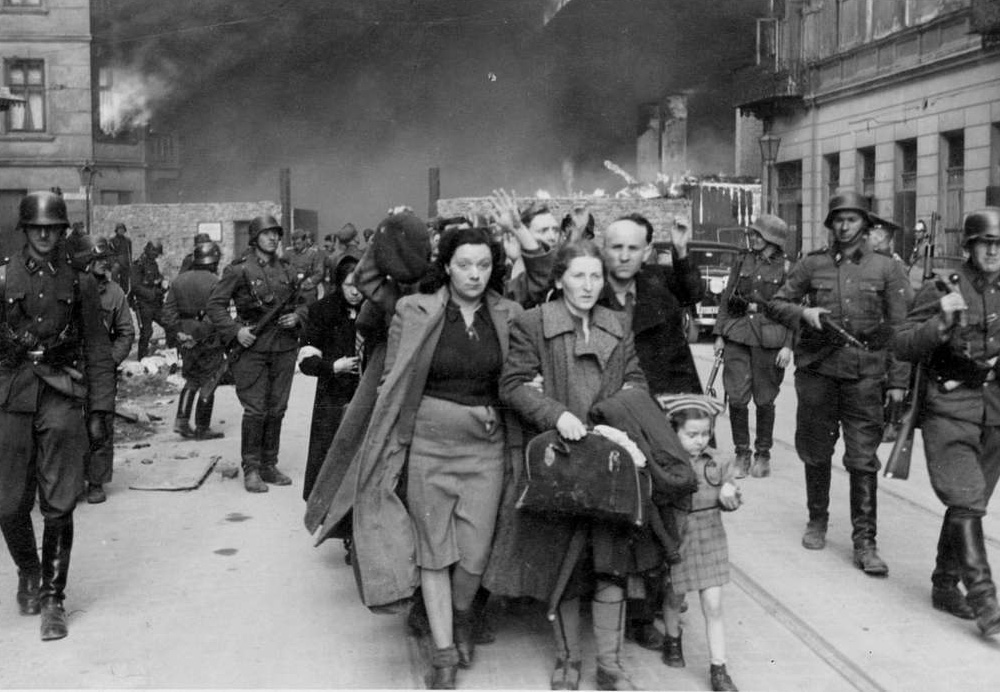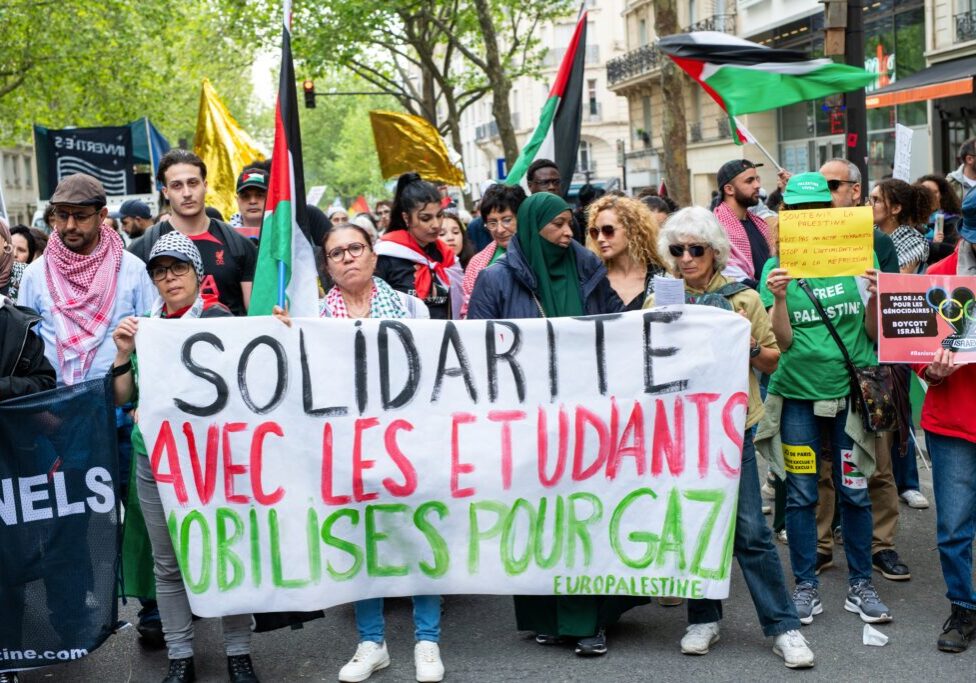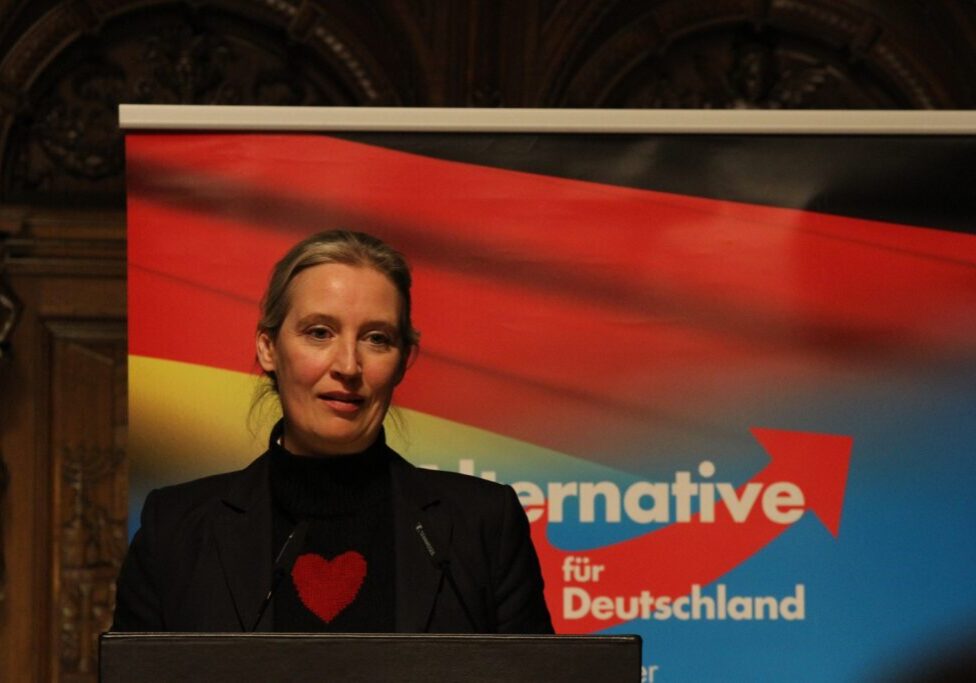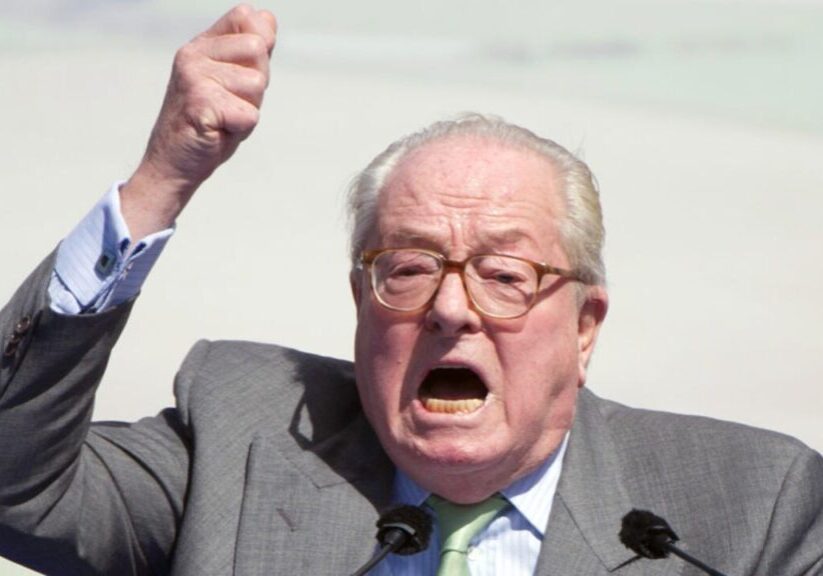Australia/Israel Review
Ultimate Defiance: The Warsaw Ghetto
May 3, 2023 | Ben Cohen

“Now something unprecedented took place. Three officers with lowered machine pistols appeared. They wore white rosettes in their buttonholes – emissaries. They desired to negotiate with the Area Command. They proposed a 15-minute truce to remove the dead and the wounded. They were also ready to promise all inhabitants an orderly evacuation to working camps in Poniatow and Trawniki, and to let them take along all their belongings. Firing was our answer. Every house remained a hostile fortress. From every floor, from every window, bullets sought hated German helmets, hated German hearts.”
There are many inspiring stories from the Warsaw Ghetto Uprising of April 1943, the 80th anniversary of which was marked last month, but the passage quoted above is probably the one that left the deepest impression upon me.
I first read it many years ago, when I picked up a copy of The Ghetto Fights, a memoir by Marek Edelman, who was a leader of the Bund, the pre-war Jewish Socialist party, and who participated in the uprising against the Nazi occupiers. Edelman was describing the aftermath of the epic battle that commenced on April 19, 1943, when the Germans attempted to liquidate the ghetto with columns of troops, armoured vehicles and tanks, and with heavy artillery pieces placed outside its walls. But the Jewish resistance fighters inside had anticipated their arrival; in the ensuing combat, the Germans became trapped at the intersection of Mila and Zamenhofa Streets, with their intended path to a safe retreat fatally exposed to the guns wielded by fighters of the ZOB and the ZZW, the two Jewish military organisations in the ghetto. “Not a single German left this area alive,” wrote Edelman.
At the same time, further German units were pinned down in Nalewki and Gesia streets. “German blood flooded the street,” Edelman recalled. “German ambulances continuously transported their wounded to the small square near the Community buildings. Here the wounded lay in rows on the sidewalk awaiting their turn to be admitted to the hospital.” By 2 pm that same day, the Jewish fighters realised that they had won a key battle over their oppressors.
The Germans returned to the ghetto walls 24 hours later and were again met with hails of bullets and deadly attacks using what we now call Improvised Explosive Devices (IEDs). It was at this point that the three German officers described by Edelman came begging for a ceasefire, in order to collect their dead and wounded. In that precise moment, the role of the Jew and the German, of the “Untermensch” and the “Aryan” – cemented over the previous decade by the growing power of the Third Reich – was utterly inverted.
Every bullet fired at the Germans was a riposte to the grotesque slogan carved into the gates of Auschwitz, “Arbeit Macht Frei” (“Work Makes You Free”). And every German who fell while attempting to rescue his wounded comrades was a sign that the humanity of the Jews had not been extinguished – that they were real agents making real decisions, including the decision to deny the enemy any form of mercy or regard amid the heat of the fighting.
The energy and the intensity shown by the 700 poorly armed young Jewish fighters reflected the understanding, deep in their hearts, that the battle for the ghetto was not ultimately one in which they would prevail.
“We knew we couldn’t win,” wrote Mira Fuchrer, just 21 years old, one of the women fighters who came from the ranks of the Labour Zionist Hashomer Hatzair organisation. “We fought so we could die with dignity.”
For Fuchrer’s boyfriend, the 22-year-old commander of the ZOB, Mordechai Anielewicz, the sheer fact of the uprising was a fillip to Europe’s Jews in their darkest hour, and therefore in itself a victory. “The dream of my life has risen to become fact,” he reflected at the height of the fighting. “Self-defence in the ghetto will have been a reality. Jewish armed resistance and revenge are facts! I have been a witness to the magnificent, heroic fighting of Jewish men of battle.”
Like other aspects of the Holocaust and World War II more generally, the details of the Warsaw Ghetto uprising have become richer and more complicated with further research over time. Critically, thanks largely to the painstaking work of the late Moshe Arens, a former Israeli cabinet minister, we now know that there was not just one – as was assumed for several decades – but two military groups in the ghetto. As well as the Jewish Fighting Organisation (ZOB), which drew supporters of the non-Zionist Bund and left-wing Zionists such as Dror and Hashomer Hatzair, there was the Jewish Military Union (ZZW), commanded by Pawel Frenkel and rooted in the Revisionist Zionist Betar movement of Vladimir Jabotinsky.
The political divide between these two organisations was unmistakable, as was the internal split within the ZOB between those leftists who supported the creation of a Jewish state and those who saw Zionism as a needless deviation from the proletarian class struggle (but not, I should emphasise, as a “racist”, “colonialist” project in the manner of those who define themselves as anti-Zionists today).
Yet the imperative of defeating the Germans was overwhelming, and so the ZOB and the ZZW, Betarniks and Bundists alike, forged a strategic alliance. The ZOB distributed its fighters at different points around the ghetto while the ZZW concentrated its forces in Muranowska Square, flying a blue-and-white Zionist flag alongside a Polish one from its headquarters, as it pushed back against the German advance.
The vicious urban fighting lasted for nearly a month before the Germans were able to declare victory. “The former Jewish Quarter in Warsaw is no more,” announced the SS Commander Jurgen Stroop in a May 16, 1943 cable to his superiors in Berlin.

The fall of the Ghetto led to deportations to the concentration camps (Image: Picryl)
In the event, the ghetto was razed, and most of the surviving fighters committed suicide rather than face capture and humiliation at the hands of the Germans. The 42,000 Jews who still remained in the ghetto two years after the Germans began mass deportation of the community were transported either to the Majdanek concentration camp or the labour camps at Poniatow and Trawnicki. Most of them were murdered at those locations during a two-day mass shooting operation in November 1943.
“Never say that you are walking the final road/Though leaden skies obscure blue days,” the ghetto fighters would sing. “The hour we have been longing for will still come/Our steps will drum – we are here!”
Eighty years later, as their descendants wrestle with a resurgence of antisemitism (albeit in far more favourable circumstances – the existence of a Jewish state, full civil and political rights in most countries where Jews live) we should not only wish that their memory remains a blessing. Let it strengthen us, too.






